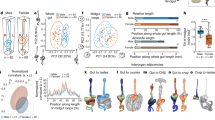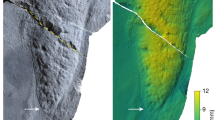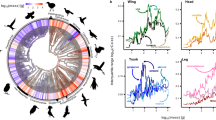Abstract
THE greater part of the basic anatomy of ophiuroids was worked out in the latter half of the last century and the results summarized in Bronn1. Iri the water-vascular system, the absence of tube-foot ampullæ comparable with those of asteroids or echinoids is striking. It has been generally recognized that the feet are less important in locomotion than the arms, and they are frequently attributed only sensory and adhesive functions. In several common genera the tube-feet are small and show only slight changes of shape, although protraction has been recorded2,3. Perhaps for these reasons there has been little discussion of possible mechanisms of protraction and it seems often to have been tacitly assumed that none is present, and that retracted feet resume the extended condition only on relaxation of their musculature (which is wholly longitudinal), by the general pressure of the cœlomic fluid in the water-vascular canals or by the elasticity of the podial wall. Ludwig4 was the first to describe the valve at the head of the podium, the lips of which prevent water from flowing back into the radial canal. The presence of this valve has been remarked upon by all subsequent reviewers of the group; but its significance, namely, that pressure is developed within the foot, has been overlooked. Comparisons between active and anæsthetized specimens of various species suggest that in a number of cases podial extension is far in excess of that which could be achieved by relaxation alone.
This is a preview of subscription content, access via your institution
Access options
Subscribe to this journal
Receive 51 print issues and online access
$199.00 per year
only $3.90 per issue
Buy this article
- Purchase on Springer Link
- Instant access to full article PDF
Prices may be subject to local taxes which are calculated during checkout
Similar content being viewed by others
References
Ludwig, O., and Hamann, O., “Die Schlangensterne” in Bronn's Klassen (1901).
Simroth, H., Z. wiss. Zool., 27, 417 (1876).
Smith, J. E., J. Mar. Biol. Assoc. U.K., 22, 345 (1937).
Ludwig, O., Z. wiss. Zool., 34, 333 (1880).
Fontaine, A. R. (personal communication, 1962).
Spencer, W. K., Phil. Trans. Roy. Soc., 235, 87 (1951).
Fell, H. B., reported in The Times (December 21, 1961).
Author information
Authors and Affiliations
Rights and permissions
About this article
Cite this article
BUCHANAN, J., WOODLEY, J. Extension and Retraction of the Tube-Feet of Ophiuroids. Nature 197, 616–617 (1963). https://doi.org/10.1038/197616c0
Issue Date:
DOI: https://doi.org/10.1038/197616c0
Comments
By submitting a comment you agree to abide by our Terms and Community Guidelines. If you find something abusive or that does not comply with our terms or guidelines please flag it as inappropriate.



